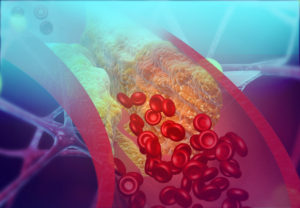 New research has found that atherosclerosis can create changes in the heart even in those who are free from heart failure and myocardial infarction. Atherosclerosis, or calcium build-up in the coronary arteries, is a strong predictor of future coronary heart disease.
New research has found that atherosclerosis can create changes in the heart even in those who are free from heart failure and myocardial infarction. Atherosclerosis, or calcium build-up in the coronary arteries, is a strong predictor of future coronary heart disease.
There have been many previous studies that suggest evidence of coronary disease interacting and progressing along with the development of the myocardial disease. This is true even in the absence of symptoms. But, data on the association between coronary artery calcium and echocardiographic-based changes in the structure and function of the heart is limited.
Advertisement
Atherosclerosis refers to the build-up of fats, cholesterol, and other substances in and on the artery walls often referred to as plaque. Over time, plaque hardens and narrows the arteries, which can restrict blood flow. In some people, atherosclerosis progresses rapidly in their 30s, and in others, it doesn’t become dangerous until they reach their 50s or 60s. Exactly how atherosclerosis starts or what causes it isn’t known.
Coronary Artery Research
For this new study, researchers from the Boston University School of Medicine (BUSM) evaluated associations between coronary artery calcification and echocardiographic measurements in 2,650 participants from the Framingham Heart Study. The average age of participants was 51 years, and 48 percent were women.
It was found that higher coronary artery calcium scores were associated with higher values of the left ventricular mass index and aortic root diameter. This is consistent with known changes in the shape, size, structure, and function of the heart.
“We know that coronary artery disease progresses along with myocardial disease, but these findings suggest that there may be a direct link between coronary artery calcium and structural and functional changes in the heart, emphasizing the need to follow a healthy lifestyle to help prevent calcification of the arteries,” explained corresponding author Vanessa Xanthakis, Ph.D., assistant professor of medicine and biostatistics at BUSM and an Investigator for the Framingham Heart Study.
Advertisement
The findings of the study published in PLOS ONE show the need for additional studies to clarify the pathophysiological basis of the association between atherosclerosis and the structure of the heart.
Coronary calcium build-up is not reversible, but it can be kept at bay by intensively managing risk factors. Leading a healthy lifestyle including cutting out smoking, getting regular exercise, and eating a healthy diet can all help towards preventing calcium deposits in the arteries. Five servings of vegetables and fruit daily can decrease the risk of coronary artery disease, and foods that help to lower calcium and cholesterol can help to reverse the damage of the build-up.
Eat dairy and other high-calcium foods in moderation. Although researchers disagree on whether too much dairy has been found to cause an excess of calcium leading to arterial buildup, many agree to consume it in moderation. It may also increase cholesterol and triglyceride levels, which are also factors in atherosclerosis.
